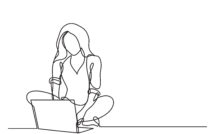

In this section of Campus, EuropeNow features a selection of scholarly articles and books on topics pertinent to the teaching of Europe or teaching in Europe that were published within the last 5 years. This dynamic bibliography, with monthly installments, seeks to highlight both pedagogy research as well as critical analyses of debates taking place in higher education in and about Europe.
If you are interested in reviewing any of the books featured in any of our Campus Round-Ups, please contact our Research and Pedagogy Chair, Hélène Ducros, at helene@alumni.unc.edu
1. Disaster Drawn: Visual Witness, Comics, and Documentary Form
By Hillary L. Chute
Abstract: In hard-hitting accounts of Auschwitz, Bosnia, Palestine, and Hiroshima’s Ground Zero, comics display a stunning capacity to bear witness to trauma. Investigating how hand-drawn comics has come of age as a serious medium for engaging history, Disaster Drawn explores the ways graphic narratives by diverse artists, including Jacques Callot, Francisco Goya, Keiji Nakazawa, Art Spiegelman, and Joe Sacco, document the disasters of war. Hillary L. Chute traces how comics inherited graphic print traditions and innovations from the seventeenth century and later, pointing out that at every turn new forms of visual-verbal representation have arisen in response to the turmoil of war. Modern nonfiction comics emerged from the shattering experience of World War II, developing in the 1970s with Art Spiegelman’s first “Maus” story about his immigrant family’s survival of Nazi death camps and with Hiroshima survivor Keiji Nakazawa’s inaugural work of “atomic bomb manga,” the comic book Ore Wa Mita (“I Saw It”)―a title that alludes to Goya’s famous Disasters of War etchings. Chute explains how the form of comics―its collection of frames―lends itself to historical narrative. By interlacing multiple temporalities over the space of the page or panel, comics can place pressure on conventional notions of causality. Aggregating and accumulating frames of information, comics calls attention to itself as evidence. Disaster Drawn demonstrates why, even in the era of photography and film, people understand hand-drawn images to be among the most powerful forms of historical witness.
Find this book at Harvard University Press here
2. Teaching Graphic Novels in the English Classroom: Pedagogical Possibilities of Multimodal Literacy Engagement
Edited by Alissa Burger
Abstract: This collection highlights the diverse ways comics and graphic novels are used in English and literature classrooms, whether to develop critical thinking or writing skills, paired with a more traditional text, or as literature in their own right. From fictional stories to non-fiction works such as biography/memoir, history, or critical textbooks, graphic narratives provide students a new way to look at the course material and the world around them. Graphic novels have been widely and successfully incorporated into composition and creative writing classes, introductory literature surveys, and upper-level literature seminars, and present unique opportunities for engaging students’ multiple literacies and critical thinking skills, as well as providing a way to connect to the terminology and theoretical framework of the larger disciplines of rhetoric, writing, and literature.
Find this book at Palgrave MacMillan here
3. Disciplining Comics: Teaching in the Humanities with Graphic Histories
Sponsored by the National Humanities Center and led by Trevor R. Getz
Abstract: Comics are serious stuff. Non-fiction graphic novels are suddenly everywhere, and many deal with the events, experiences, and ramifications of the past. They offer readers access to issues of memory, power, biography, and inter-generational trauma. They also provide unique opportunities for students to encounter and construct meaningful and usable histories. Too often, however, we teach them as if they were merely illustrated texts, and as a result our students miss out on the opportunity to learn how to read and think about the past in multiple modalities. In this webinar, historian and graphic history author Trevor R. Getz will discuss ways to bring the learning opportunities of the comic medium to the humanities classroom.
Find this webinar at the National Humanities Center here
4. Marjane Satrapi and the Graphic Novels from and about the Middle East
By Chris Reyns-Chikuma and Houssem Ben Lazreg
Abstract: Persepolis, Marjane Satrapi’s prominent graphic autobiography, depicts her coming-of-age in Iran during and after the Islamic Revolution. It offers an intriguing perspective that challenges preconceived ideas and stereotypes about Iran and the region overall. In light of the story’s success as a graphic novel and a film on the international arena, this genre has become very popular among several Middle Eastern writers and artists such as Zeina Abirached, Lena Irmgard Merhej, Magdy El Shafee, Leila Abdelrazaq, and Riad Sattouf, who used it to shed light on personal, sociopolitical and cultural issues in the Arab/Muslim world. In this article, we examine the literary, aesthetic, and thematic influences of Satrapi on other North African and Middle Eastern graphic novelists. The corpus we selected encompasses five main countries (Egypt, Iran, Lebanon, Palestine, Turkey) as well as the Maghreb (e.g., Tunisia, Algeria, Libya) due to the strong linguistic and religious ties with the Middle East. We conclude by commenting on a highly controversial graphic novel entitled L’Arabe du Futur, which, like Persepolis, provides a problematic political and ideological representation of the region.
Find this article in the Arab Studies Quarterly here
5. A Look over the Wall: Using the Graphic Novel drüben! to Teach Linguistic, Literary, Cultural, and Visual Skills
By Julia Ludewig
Abstract: This article discusses the potential and challenges of teaching a second-semester German class with Simon Schwartz’s graphic novel drüben! (2009) alongside a traditional textbook. While the class explored linguistic, literary, and cultural-historical aspects of drüben!, a GDR-themed family memoir, the focus here is on those pedagogical interventions which dealt with the training of visual literacy. The article outlines how instructors can use the novel to not only familiarize students with the depicted cultural artifacts and practices, but also to introduce them to the visual language of comic books and culture-specific traditions of visual representation more generally. Sample lesson units and exercises are provided along with reflections on what worked and on ways to overcome the shortcomings that were encountered. One such shortcoming was the gap between students’ passive and active language capabilities, which one could bridge by providing (comic book) specific Redemittel. Even though adding or focusing on visual literacy requires substantial effort on both the students’ and the instructor’s side, comics and graphic novels offer a holistic and not least motivating way of training language, cultural, and visual skills.
Find this article in Die Unterrichtspraxis/Teaching German here




